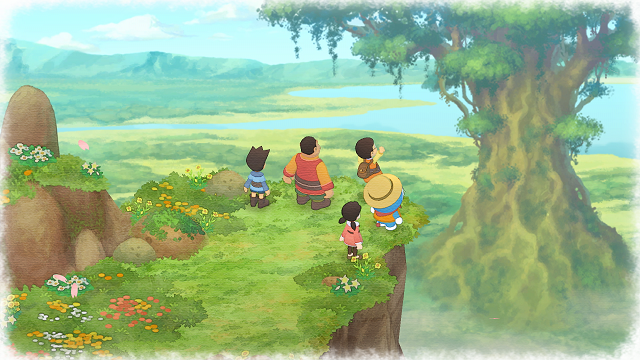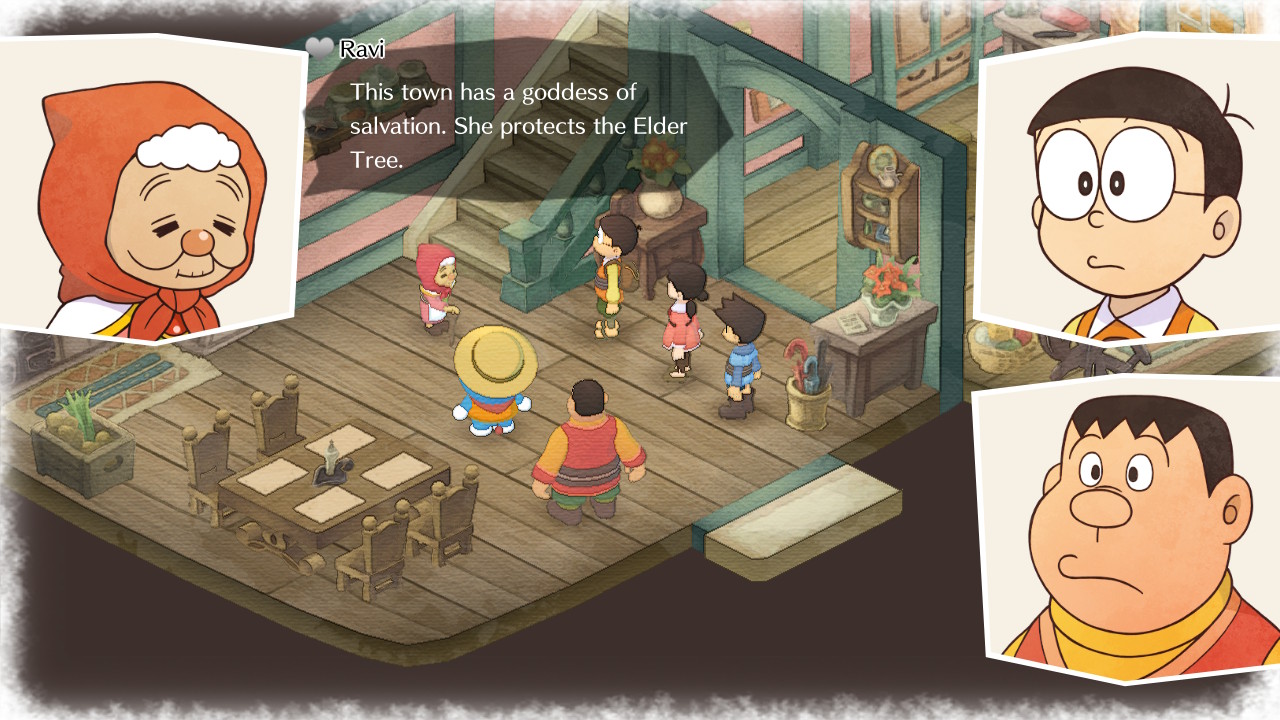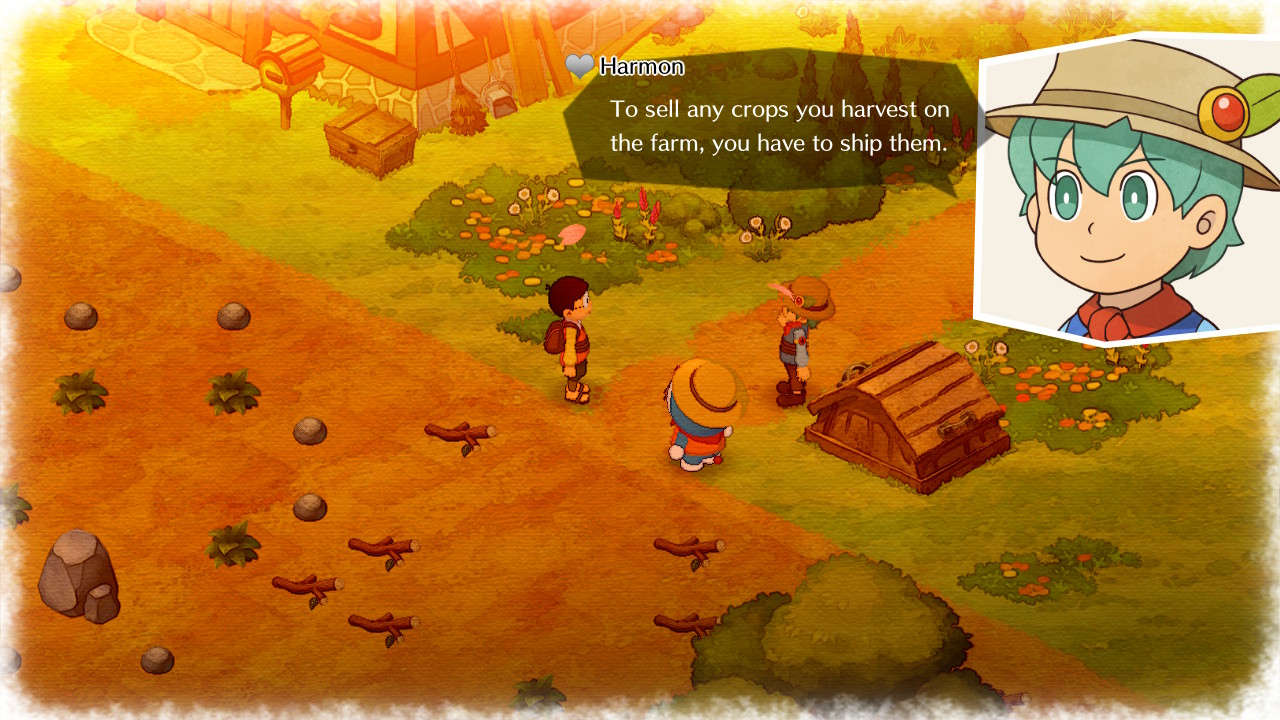If you don’t know the story of Doraemon, the robotic cat from the future, and his friend Noby Nobi, you’re likely in the majority of Westerners who’ve missed out on nearly 50 years of one of Japan’s most successful manga and anime.
I admit, I only know bits and pieces about the series, gleaned from Fandom and wiki pages. Fortunately, though, you don’t really need to know much about them to enjoy Doraemon: Story of Seasons.
Though it suffers from some bumps here and there, Doraemon: Story of Seasons is a charming, relaxing, and absorbing game that also manages to be a strong entry in the Story of Seasons series.
Doraemon: Story of Seasons Review — Farm Fresh Goodness
The story begins one seemingly ordinary summer day when Noby and Doraemon find a strange seed. Noby thinks it would be a great way out of thinking up another summer project for school, so the two decide to plant it.
The tree that grows turns out to be a bit more interesting than Noby anticipated, though, and he, Doraemon, and their (apparently) usual posse get transported to a place called Natura. It’s a place Noby’s only seen in his dreams.
One of the recurring themes in Doraemon is the titular cat’s bevy of futuristic gadgets that either make life easier for Noby or help get him out of scrapes. Unfortunately for the group, most of these get lost in the vortex that takes everyone to Natura.
The general idea behind gameplay in Doraemon: Story of Seasons is working out a way to get back home, but really, no one’s in much of a rush. From the time I’ve put in thus far (into year 2), there doesn’t seem to be an actual end. If there is one, it won’t come until a good bit later, at any rate.
The other thing that won’t come right away is the point where you can actually play the game. That’s because the opening sequence and introduction to Natura are rather long. Whether you’ll notice this outright is another matter, though, because the setup and character introductions are so cozy, it balances out the time it takes to get through them.
If you’ve played Story of Seasons before (including the older games the West knows as Harvest Moon), you’ll instantly recognize everything that comes afterward, from the farming routine to plundering the mines, befriending townsfolk, and almost everything else in between.
Doraemon: Story of Seasons is reminiscent of the feel and style found in Back to Nature/Friends of Mineral Town, and while it might sound like a criticism to say it doesn’t advance the genre in a significant way, it’s actually a positive thing.
Those two Harvest Moon games are often regarded as some of the best, and it’s not hard to see why. They balance gameplay with social elements and enough variation in your farm chores to keep things feeling fresh. Doraemon does the same, with some upgrades and improvements to give you even more customization options with crops, animals, and buildings.
It’s not Stardew Valley levels of customization, but there’s a lot to work towards and plenty of ways to make your farm your own.
All this means Doraemon: Story of Seasons is a satisfying return to form for a series that sometimes struggles to find its way. The Doraemon element adds enough variation and pull to keep it from being just another rehash of the foundational HM/SoS gameplay. It’s integrated in a way that feels completely natural as well, unlike the theme-park style of Trio of Towns.
Add in sidequests, a cast of unique personalities, fishing, bug hunting, and a vast map to explore, and it equals a game with a strong identity of its own.
There are some exciting — and welcome — changes in how you get your farm started, though. Typically, every spring in HM/SoS and SV is a struggle, where you can barely afford seeds for a while, let alone anything actually useful. However, the Natura general store kindly gives you a bundle of spring seeds just for existing, enough to deplete little Noby’s stamina meter during the watering process.
 This kickstarts the moneymaking process and lets you save towards the bug net — another essential for making money — and, more importantly, the bigger rucksack. Noby’s elementary school satchel only works for so long.
This kickstarts the moneymaking process and lets you save towards the bug net — another essential for making money — and, more importantly, the bigger rucksack. Noby’s elementary school satchel only works for so long.
Doraemon himself develops some useful inventions to smooth out the farming process, too, from frog-themed patches that keep your stamina from wearing out to an insta-grow formula that forces a crop to its next stage of growth. Your farm is almost centrally located as well, so you’ve got quick access to the main areas you’ll need most often, like the town, beach, and carpenter’s shack. It makes life a lot easier until you get a horse to speed travel up some.
Another element contributing to Doraemon’s unique identity is the relationship system. No, you can’t romance the good folk of Natura because Noby is an elementary school student and shouldn’t start affairs with married people. But you do develop friendships with everyone that make up for the lack of marriage and offspring production methods.
Developing friendships borrows a bit from Animal Crossing, in that gifts are undoubtedly welcome, but you get points just for talking to your friends and neighbors.
It’s a refreshing change, actually. I like slyly offering gifts intentionally designed to make people my friends and, ergo, get something good for it in return, sure. But the idea of just being there, getting along, and slowly developing relationships in the process is an approach that fits perfectly with the game’s themes. Plus, it puts the focus firmly on the friends themselves — instead of on how many presents you need to offer for them to finally realize you should be treated like a human being.
One nice touch in the friendship department is that everyone has multiple lines of dialogue for each season, and it takes a little while to get a repeat line. It’s good incentive to keep talking to people at least once a day and makes Natura feel like a living town, plus you don’t have to hear about how Penny likes kids 24/7.
And Natura does feel alive. There’s the character style, pulled straight from the Doraemon series, and offering a surprising level of detail for something so seemingly simple. Then there’s the game’s style itself. Doraemon: Story of Seasons uses a gorgeous blend of watercolor and lush storybook style to create a soft and consistently pleasing aesthetic.
The localization is consistently excellent as well, and one thing that stands out is how, despite being geared towards a younger audience, the dialogue isn’t dumbed down. It’s something players of any age can comprehend while still being varied and engaging.
A few warts marr the otherwise lovely game, though. As with any 3D game where objects are grid-based, it’s sometimes a bit of a pain targeting the right object unless you’re at a certain angle. The button layout makes it a bit too easy to consume edible objects or use a tool on accident as well, especially since it’s mapped to the main action button. Depending on where you’re located, you could read a sign, or you might accidentally eat that crop you were saving for a present.
There’s also a bit of an issue with the music tracks, where they’ll cut out when an event starts, start again, and then cut out and restart after the event. It’s not as obnoxious as the Final Fantasy IX music bug, but it is a bit jarring.
And as with all farm-sim games, there are times in between harvesting, quests, and events where you might feel like there could be just a few more ways to spend your time, but a jaunt down to the beach for some fishing or some foraging in the mountains soon banishes that issue.
Doraemon: Story of Seasons Review — The Bottom Line

Pros:
- An excellent combination of classic gameplay with new elements
- Charming style
- Refreshing twist on making friends
- Strong localization makes for engaging conversation
- Some great quality of life touches to streamline gameplay
- Perfect integration of the two franchises
Cons:
- Some issues with object targeting
- Button mapping could use some slight revision
- Irksome when music cuts out then restarts during events
- Might not appeal to fans wanting a complete Story of Seasons revision
Doraemon: Story of Seasons might not be for you if you’ve seen everything there is to see in the many farm-sim games out there and only want something brand new — or if you have a burning need to marry people.
If you’re looking for something that offers the gameplay you love from older Story of Seasons games with a distinct twist to keep things interesting, then you should definitely spend some time with the lovable robo-cat and his motley crew.
[Note: A copy of Doraemon: Story of Seasons was provided by Bandai Namco for the purpose of this review.]











Published: Oct 21, 2019 03:23 pm